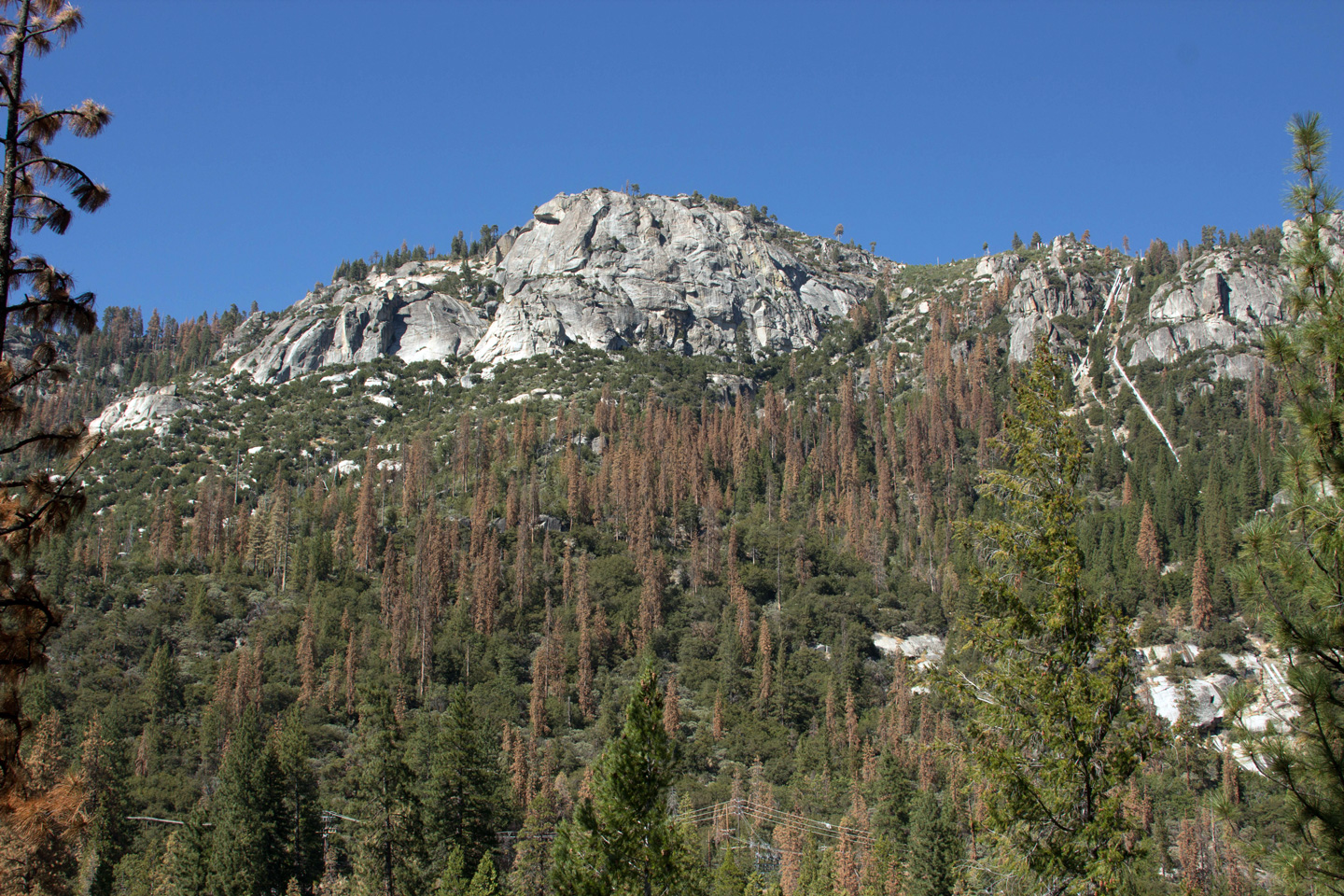
Trees killed by beetle infestation near Big Creek in the southern Sierra. Photo by Dan Brekke.
As climate change continues to remake global landscapes, researchers from UC Berkeley and the United States Forest Service have uncovered early warnings of a growing mismatch between forest composition in the West and climate change.
Over the last decade, Western forests became increasingly dominated by trees that are more capable of surviving in a hotter and drier climate, according to a new study published on April 24 in the Proceedings of the National Academy of Sciences. However, while the exact factors that influence this “thermophilization” process may vary across forests, the study finds that this overall change in composition lags behind the pace of climate change.
“If you're concerned about forest health then one thing you want to observe is whether the rate at which forest composition changes is roughly equivalent to the rate at which the climate changes,” said lead author Kyle Rosenblad, a PhD student in the Department of Integrative Biology. “We found that climate change is outpacing the ability of forests and tree biomass to keep up, which is a potential concern for forest managers.”
Every 10 years, Forest Service scientists measure and collect data in tree plots across the United States. This “tree census” provides a glimpse into the health and condition of the country’s millions of acres of forests and offers researchers an opportunity to track changes over time. Rosenblad and co-authors analyzed nearly 45,000 forest subplots measured during the last tree census and found that forested areas in the western U.S. warmed an average of 0.32 degrees Celsius (0.57 degrees Fahrenheit) between 2011 and 2020.
Thermophilization rates, however, were 10 times slower than the average increase in temperature. Changes in forest composition were the most drastic in plots that experienced the strongest warming and drought conditions, according to the study’s findings, as well as forests located on north-facing hillsides or those that experienced attacks by insects like bark beetles.
“This research shows that tree species with low temperature tolerances are dying, and new trees are not growing fast enough to compensate for these changes,” said senior author David Ackerly, dean of Rausser College of Natural Resources and a professor in the departments of Integrative Biology and Environmental Science, Policy, and Management. “These trends are an early warning that changes in the forest are lagging behind the pace of climate change, which may make them more vulnerable to warmer and drier conditions in the future.”
Rosenblad said the gap between climate and forest change will widen if extreme heat and drought continue throughout the West. The shift will fuel successive cycles of tree death that disrupt crucial ecosystem functions and release sequestered carbon into the atmosphere.
“Whatever trees are managing to grow and reproduce in their stead are not better adapted to the future climate,” Rosenblad adds. “This is definitely concerning for the ability of these forests to continue growing and sequestering carbon as climate change progresses.”
Kathryn Baer, a research ecologist at the Forest Service’s Pacific Northwest Research Station, also contributed to the study.
Read More
